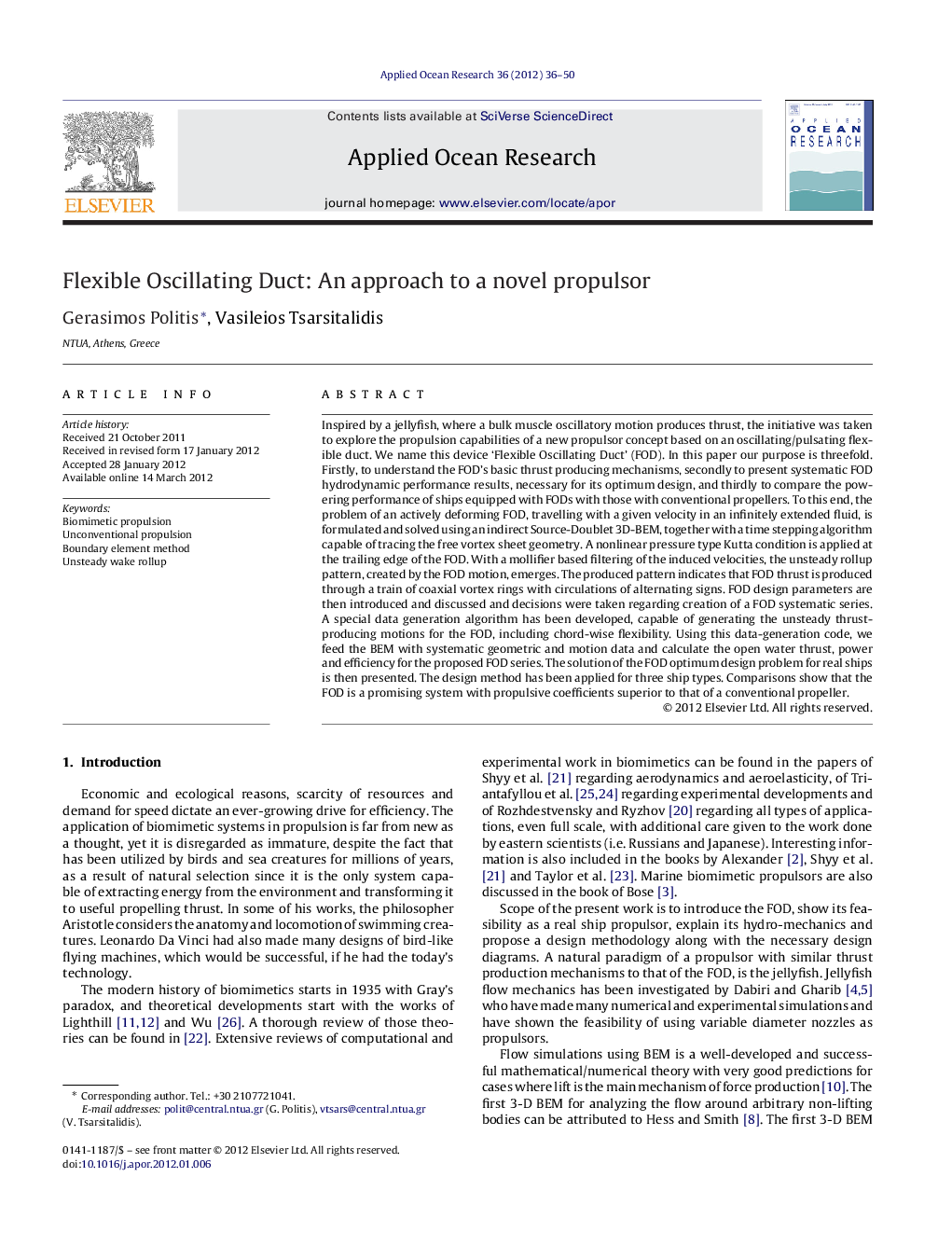| Article ID | Journal | Published Year | Pages | File Type |
|---|---|---|---|---|
| 1720209 | Applied Ocean Research | 2012 | 15 Pages |
Inspired by a jellyfish, where a bulk muscle oscillatory motion produces thrust, the initiative was taken to explore the propulsion capabilities of a new propulsor concept based on an oscillating/pulsating flexible duct. We name this device ‘Flexible Oscillating Duct’ (FOD). In this paper our purpose is threefold. Firstly, to understand the FOD's basic thrust producing mechanisms, secondly to present systematic FOD hydrodynamic performance results, necessary for its optimum design, and thirdly to compare the powering performance of ships equipped with FODs with those with conventional propellers. To this end, the problem of an actively deforming FOD, travelling with a given velocity in an infinitely extended fluid, is formulated and solved using an indirect Source-Doublet 3D-BEM, together with a time stepping algorithm capable of tracing the free vortex sheet geometry. A nonlinear pressure type Kutta condition is applied at the trailing edge of the FOD. With a mollifier based filtering of the induced velocities, the unsteady rollup pattern, created by the FOD motion, emerges. The produced pattern indicates that FOD thrust is produced through a train of coaxial vortex rings with circulations of alternating signs. FOD design parameters are then introduced and discussed and decisions were taken regarding creation of a FOD systematic series. A special data generation algorithm has been developed, capable of generating the unsteady thrust-producing motions for the FOD, including chord-wise flexibility. Using this data-generation code, we feed the BEM with systematic geometric and motion data and calculate the open water thrust, power and efficiency for the proposed FOD series. The solution of the FOD optimum design problem for real ships is then presented. The design method has been applied for three ship types. Comparisons show that the FOD is a promising system with propulsive coefficients superior to that of a conventional propeller.
► Explore the propulsion capabilities of a new propulsor concept based on an oscillating/pulsating flexible duct (FOD). ► Understand the FOD's basic thrust producing mechanisms. ► Present systematic FOD hydrodynamic performance results, necessary for its optimum design. ► Compare the powering performance of ships equipped with FODs with that with conventional propellers. ► The FOD is a promising system with propulsive coefficients superior to that of a conventional propeller.
